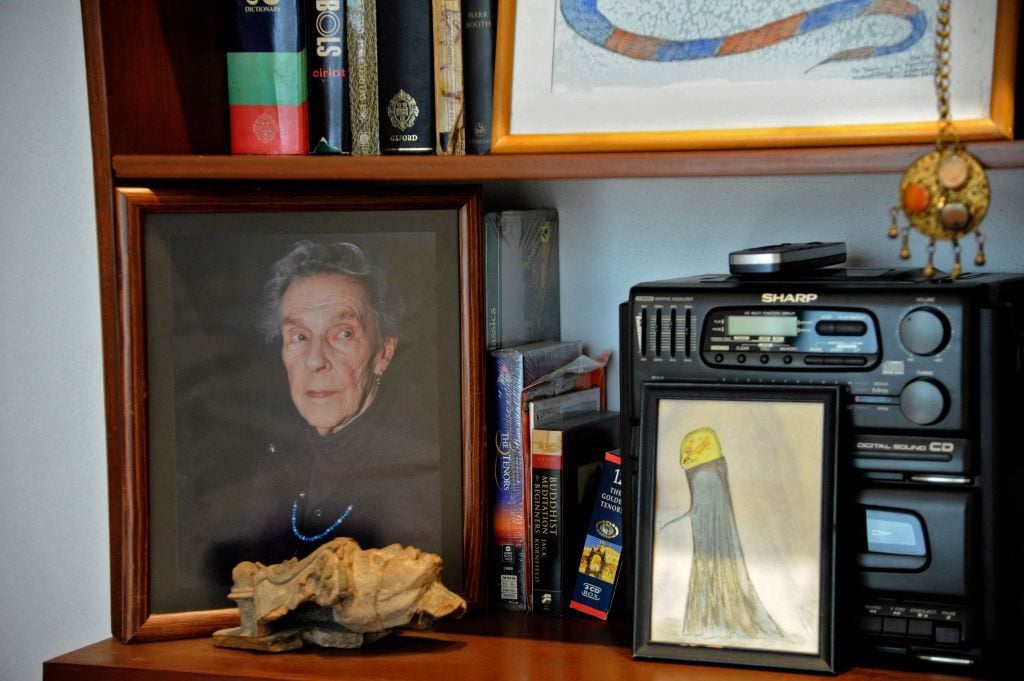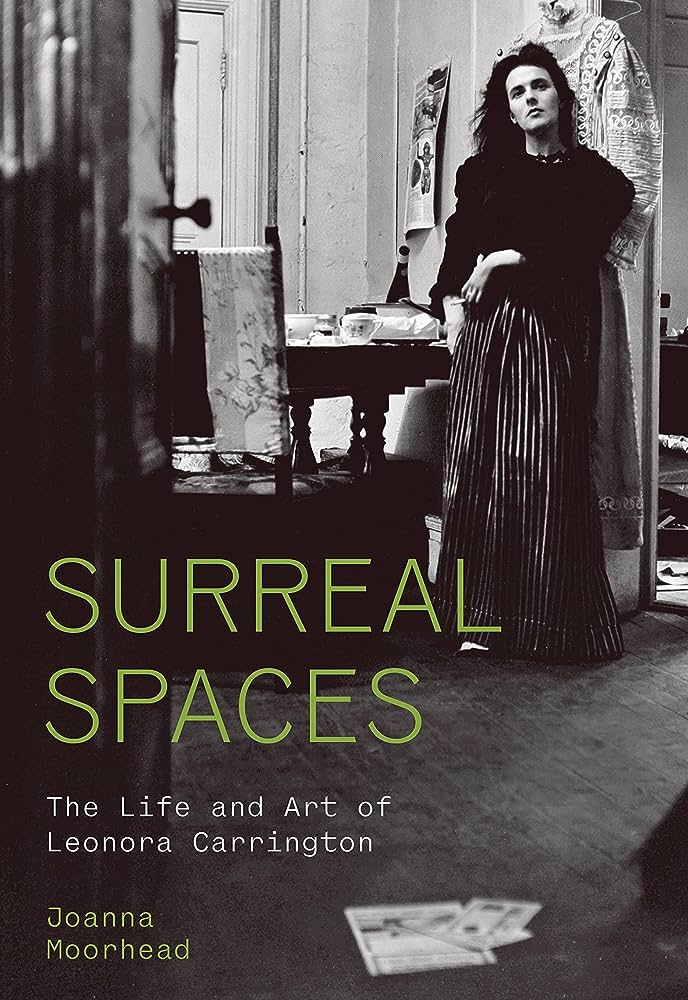The Art Angle
The Art Angle: How Surrealist Artist Leonora Carrington Carved Her Space in a Male-Dominated World
This week, an interview with Joanna Moorhead, whose new book delves into the life and work of the surrealist artist.
![[10:22 AM] Caroline Goldstein Leonora Carrington in Mexico. Courtesy of West Dean College of Arts and Conservation. [10:22 AM] Caroline Goldstein Leonora Carrington in Mexico. Courtesy of West Dean College of Arts and Conservation.](https://news.artnet.com/app/news-upload/2023/08/MicrosoftTeams-image-6-1024x1024.jpg)
This week, an interview with Joanna Moorhead, whose new book delves into the life and work of the surrealist artist.
![[10:22 AM] Caroline Goldstein Leonora Carrington in Mexico. Courtesy of West Dean College of Arts and Conservation. [10:22 AM] Caroline Goldstein Leonora Carrington in Mexico. Courtesy of West Dean College of Arts and Conservation.](https://news.artnet.com/app/news-upload/2023/08/MicrosoftTeams-image-6-1024x1024.jpg)
Artnet News

Welcome to the Art Angle, a podcast from Artnet News that delves into the places where the art world meets the real world, bringing each week’s biggest story down to earth. Join us every week for an in-depth look at what matters most in museums, the art market, and much more, with input from our own writers and editors, as well as artists, curators, and other top experts in the field.
Despite being among the most-celebrated surrealists of the last century, British born artist Leonora Carrington is still overlooked as compared to her male counterparts, some of whom were close friends and collaborators. One surrealist was even her husband for a time—the famous painter Max Ernst.
But over the years, more and more people are coming to know Carrington’s work. The 2022 Venice Biennale was named after one of her books, titled The Milk of Dreams, about which curator Cecilia Alemani said “it describes a magical world where life is constantly re-envisioned through the prism of the imagination, and where everyone can change, be transformed, and become something or someone else.”

View of Leonora Carrington’s portrait at her house and studio in Mexico City, on May 24, 2021. Photo: Claudio Cruz/AFP via Getty Images.
This kind of a liberated self was a cornerstone of Carrington’s outlook on the world and a key to understanding the fascinating images she created. Her life story is one of world building. Dissatisfied with her well-to-do family’s vision for her future, Carrington sought freedom through boundary-pushing art.
After being kicked out of schools she eventually fell in with the Surrealists in Paris in the 1930s, who shared her thinking about art making and also how to live. But a dark era was dawning in Europe, and ultimately Carrington ended up in a mental asylum where she underwent a brutal treatment.
And so she left Europe, her family, and everything behind her, and eventually landed in Mexico, where she found the liberation that she was searching for. She’d spend the rest of her days there, and she would become a national treasure. In many ways, she never looked back.
If you look at Carrington’s paintings, there is a constant haunting from both her youth and the rooms, spaces, and landscapes of Europe. Though totally estranged for decades from her family in Europe, one day, a family member came knocking on her door. It was a cousin, Joanna Moorhead, who had heard by chance of Carrington and went to track her down in Mexico City.

Image courtesy of Princeton University Press.
Moorhead, a journalist whose writing has appeared in The Guardian and The Observer, among other titles, came to know Carrington very well over long nights and days of talking, and she wrote a book in 2017 called The Surreal Life of Leonora Carrington that chronicles her relationship with her cousin and her cousin’s life and achievements in art.
Moorhead has returned in more ways than one to Carrington’s world since the artist died in 2011. Her newest book, out on August 22nd, delves into those spaces that defined Carrington’s life and her paintings. Called Surreal Spaces, The Life and Art of Leonora Carrington, the book is a result of Moore’s careful study of Carrington’s intricate works.
This week on the podcast, Europe editor Kate Brown speaks to Joanna about the places that formed and informed the work of such an important artist.
Listen to more episodes:
The Art Angle Roundup: Frieze’s Expansion, Pollock’s NFTs, and Barbenheimer’s Impact
The Art Angle Podcast: A Security Guard’s Love Letter to the Metropolitan Museum of Art
The Art Angle Podcast: How Meow Wolf Turned Into an Unlikely Art Juggernaut
The Art Angle Podcast: The Stunning Fall of Lisa Schiff, Art Advisor to the Stars
The Art Angle Podcast: Inside the Controversy Over Hannah Gadsby’s ‘Pablo-matic’ Show
The Art Angle Podcast: What Is Hypersentimentalism? On the New Tendency in Art